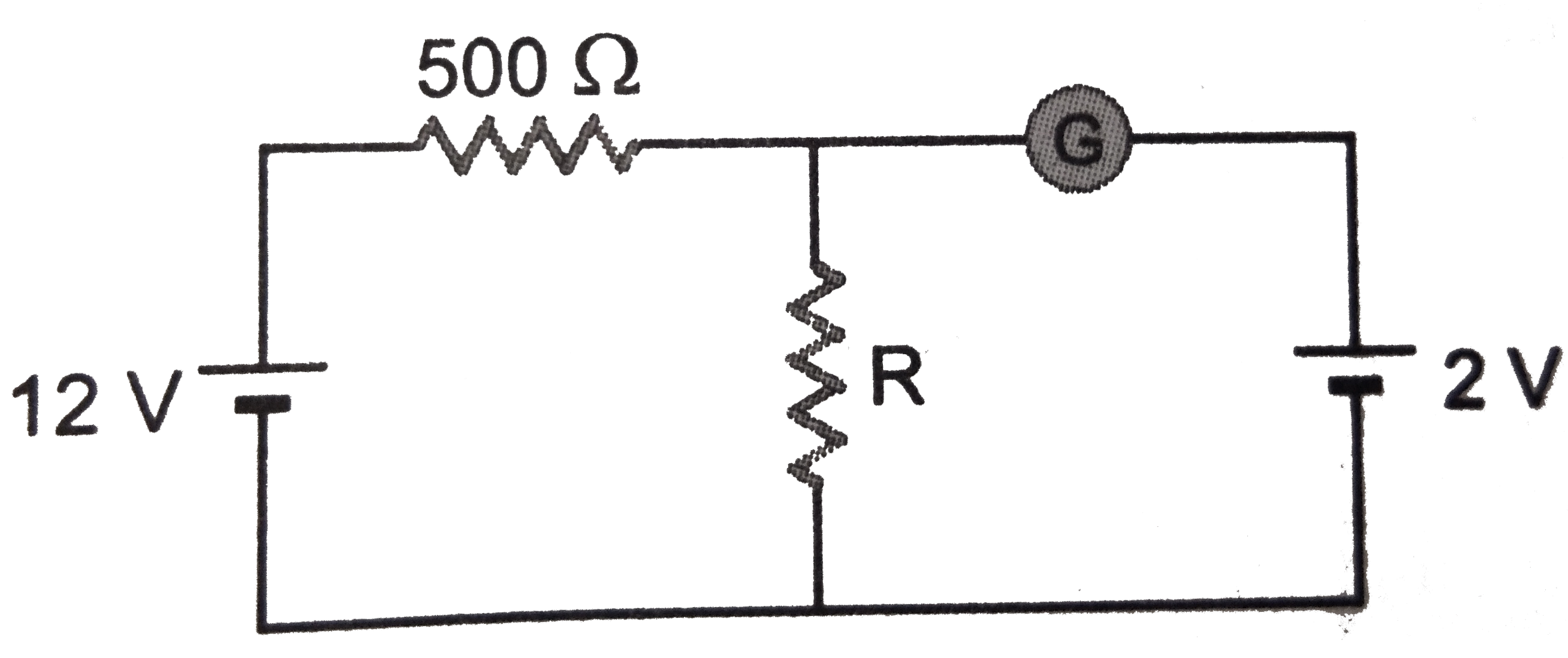Consider two identical galvanometers and two identical resistors with resistance R. If the internal resistance of the galvanometers Rc<R/2, which of the following statement(s) about any one of the galvanometers is (are) true?
The maximum voltage range is obtained when the two resistors and one galvanometer are connected in series
The maximum voltage range is obtained when the two resistors and one galvanometer are connected in series , and the second galvanometer is connected in parallel to the first galvanometer
The maximum current range is obtained when all the components are connected in parallel
The maximum current range is obtained when the two galvanometers are connected in series and the combination is connected in parallel with both the resistors
The correct Answer is:A, C
The range of voltmeter V is given by the experession
V=Ig[Rc+(Rc+R+R)]
V is max inthis case as RHS is maximum. Thus (a) is correct.
The range of ammeter I is given by the expression I=IgRcReq+Ig Where 1Req=1Rc+1R
Here Req is minimum and therefore I~ is maximum. Thus(c) is the correct option.
Topper's Solved these Questions
- MOVING CHARGES AND MAGNETISMBOOK - SUNIL BATRA (41 YEARS IITJEE PHYSICS)CHAPTER - MOVING CHARGES AND MAGNETISMEXERCISE - MCQs(d )
1 Videos
- MODERN PHYSICSBOOK - SUNIL BATRA (41 YEARS IITJEE PHYSICS)CHAPTER - MODERN PHYSICSEXERCISE - MCQ (One Correct Answer
1 Videos
- RAY AND WAVE OPTICSBOOK - SUNIL BATRA (41 YEARS IITJEE PHYSICS)CHAPTER - RAY AND WAVE OPTICSEXERCISE - JEE Main And Advanced
209 Videos
Similar Questions
Consider a galvanometer shunted with 5 Ω resistance and 2% of current passes through it. What is the resistance of the given galvanometer ?
View SolutionIn the circuit the galvanometer G shows zero deflection. If the batteries A and B have negligible internal resistance find the value of the resitor R

View Solution
Knowledge Check
If a galvanometer is shunted then among the following which statement is not true
Aeffective range increases.Bequivalent resistance decreases.Cgalvanometer becomes more sensitiveDgalvanometer becomes more protective.In a Wheatstone's brigde all the four arms have equal resistance R. If the resistance of the galvanometer arm is also R, the equivalent resistance of the combination as seen b the battery is
AR2BRC2RDR4In a Whatstone's bridge all the four arms have equal resistance R0. If the resistance of the galvanometer arm is 2R0, the equivalent resistance of the combination as seen by the battery is
AR0B2R0CR04DR02
If G, rA and rV denote the internal resistances of a galvanometer, an ammeter and a voltmeter among the following the correct relationship is
View SolutionIf G,rA and rV denote the internal resistances of a galvanometer, an ammeter and a voltmeter among the following the correct relationship is
View SolutionIf resistance of voltmeter is 10000Ω and resistance of ammeter is 2Ω then find R when voltmeter reads 12 V and ammeter reads 0.1 A
View SolutionA 50Ω resistance is connected to a battery of 5 V. A galvanometer of resistance 100Ω is to be used as an ammeter to measure current through the resistance, for this a resistancer rs is connected to the galvanometer. Which of the following connections should be employed if the measured current is within 1% of the current without the ammeter in the circuit?
View SolutionIf all four resistance and resistance of a galvanometer are equal to R with equal resistance of wheatstone bridge, then equivalent resistance is:
View Solution
